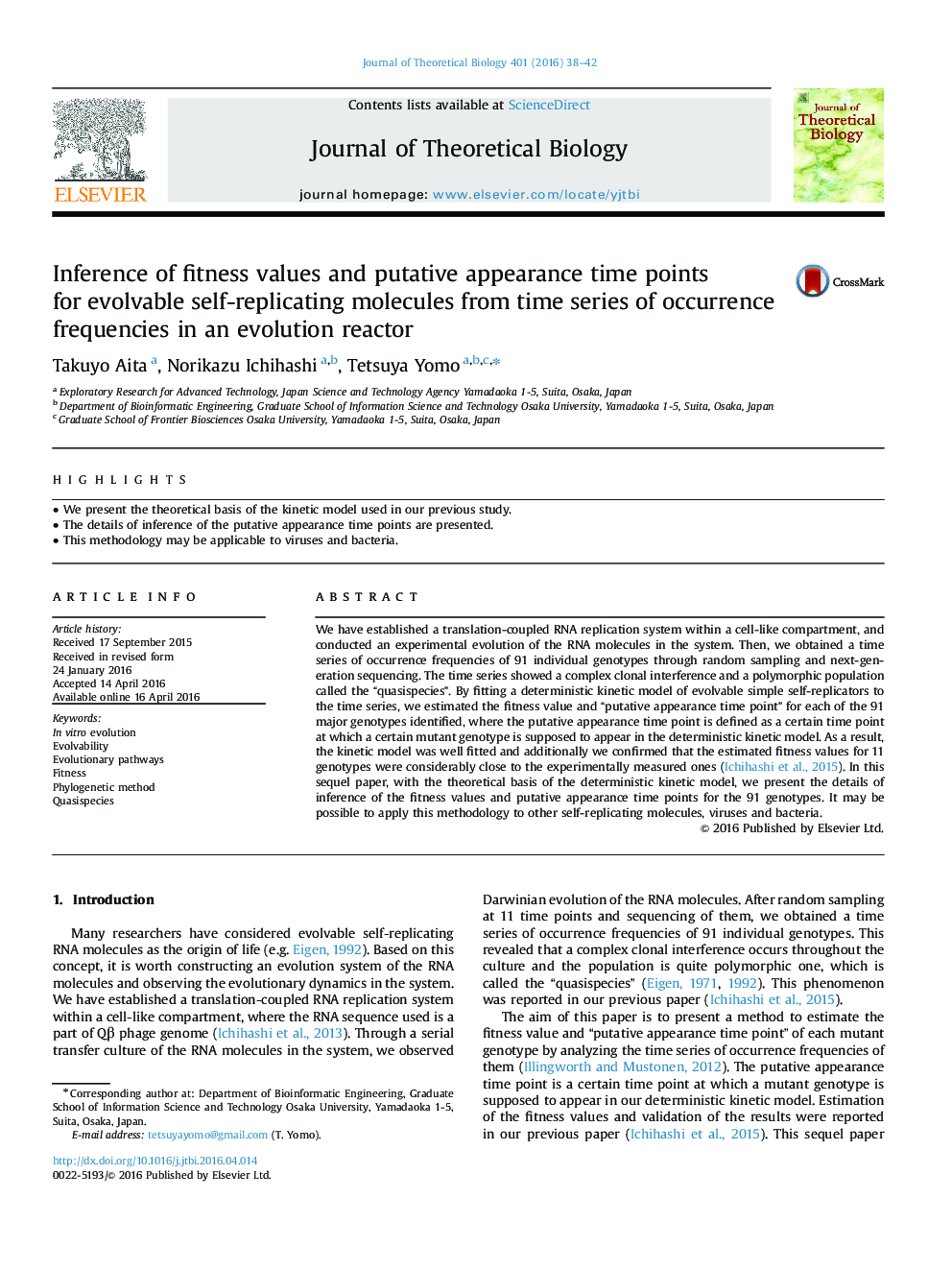| Article ID | Journal | Published Year | Pages | File Type |
|---|---|---|---|---|
| 6369179 | Journal of Theoretical Biology | 2016 | 5 Pages |
â¢We present the theoretical basis of the kinetic model used in our previous study.â¢The details of inference of the putative appearance time points are presented.â¢This methodology may be applicable to viruses and bacteria.
We have established a translation-coupled RNA replication system within a cell-like compartment, and conducted an experimental evolution of the RNA molecules in the system. Then, we obtained a time series of occurrence frequencies of 91 individual genotypes through random sampling and next-generation sequencing. The time series showed a complex clonal interference and a polymorphic population called the “quasispecies”. By fitting a deterministic kinetic model of evolvable simple self-replicators to the time series, we estimated the fitness value and “putative appearance time point” for each of the 91 major genotypes identified, where the putative appearance time point is defined as a certain time point at which a certain mutant genotype is supposed to appear in the deterministic kinetic model. As a result, the kinetic model was well fitted and additionally we confirmed that the estimated fitness values for 11 genotypes were considerably close to the experimentally measured ones (Ichihashi et al., 2015). In this sequel paper, with the theoretical basis of the deterministic kinetic model, we present the details of inference of the fitness values and putative appearance time points for the 91 genotypes. It may be possible to apply this methodology to other self-replicating molecules, viruses and bacteria.
